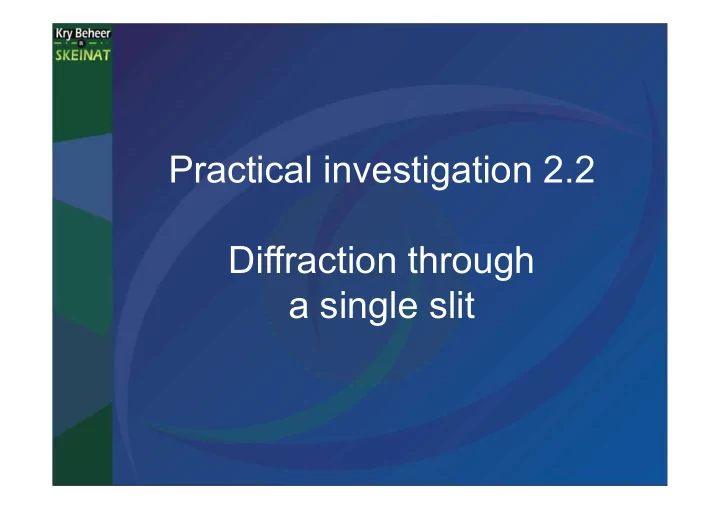

Practical investigation 2.2 Diffraction through a single slit
1. Investigative question What is the relationship between the width of a single slit and the diffraction pattern observed through the single slit?
Method • Hold a glass slide with a narrow vertical slit close to your eye and observe the light source through the slit. The slit and filament have to be in the same vertical plane. • Look through slits of different widths and compare your observations. • Repeat with light of different colours. • Sketch and describe the single slit diffraction pattern you observe in words.
INDEPENDENT, VARIABLE DEPENDENT OR REASON CONTROLLED Changed by the INDEPENDENT Slit width researcher Degree of Measured by the DEPENDENT researcher diffraction Controlled by the CONTROLLED Wavelength researcher Colour of Controlled by the CONTROLLED researcher light
RESULTS: Wider slit Narrower slit The narrower the single slit, the more diffraction takes place.
1.1 What causes the filament to look wider than it actually is? The light undergoes diffraction.
1.2 What causes the dark lines to the sides of the central bright line? Destructive interference of light
1.3 Which principle explains the observations? Huygens’ principle
2. Filters of different colours are placed in front of the bulb. 2.1 Which colour shows the broadest central bright band?
2.2 Give a reason for the difference in widths of the central band. Longer wavelength → more diffraction → wider central band. Red light has the longest wavelength.
2.3 How do the patterns for different colours compare further? Alternating bright and dark bands on either side of the central bright band. White light colours of spectrum; monochromatic light only the colour of the light.
3. Look at the bulb through slits of different widths. What is the influence of slit widths on the pattern? Wider slit width less diffraction narrower central band
4. Is the diffraction of light similar to that of waves on water? YES
5. What conclusion can you draw about the nature of light? Light has a wave nature.
Recommend
More recommend